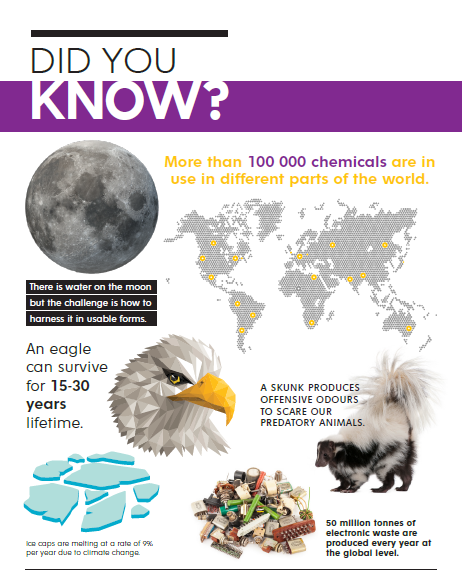“Securing a brighter future for our children and future generations requires countries to take urgent action at home and abroad to turn the tide on climate change. It is with ambition, courage and collaboration as we approach the crucial COP26 summit in the UK that we can seize this moment together, so we can recover cleaner, rebuild greener and restore our planet,” Prime Minister of the United Kingdom, Boris Johnson.
The Conference of Parties (COP) is a supreme decision-making body of the United Nations Framework Convention on Climate Change. The UNFCCC was formed in 1994 in order to stabilize greenhouse gas emissions and protect mother nature from climate change threats. COP’s key task is to review national communications and emission inventories submitted by its parties. The body aims at assessing the effects of the measures taken by its parties and the progress made in achieving the ultimate objective of the convention.
Previous COP series are interrelated and they have built upon milestones to be achieved and this is to continue at the upcoming COP26 session. The table below outlines the key previous COP sessions which cement the objectives of the upcoming COP26.
| COP | Location | Time | Decision |
| 3 | Kyoto, Japan | 1 December to 10 December 1997 | Adopt Kyoto Protocol on the GHG stabilization |
| 11 | Montreal, Canada | 28 November to 9 December 2005 | Adopt Montreal Action Plan agreement to “extend the life of the Kyoto Protocol beyond its 2012 expiration date”. |
| 16 | Cancún, Mexico | 28 November to 10 December 2010 | Raise US$100 billion per annum “Green Climate Fund”, and a “Climate Technology Centre” and Network. |
| 21 | Paris, France | 30 November to 12 December 2015 | Adopt Paris Agreement on keeping global temperatures below 2o Celsius and 1.5o Celsius preferably above pre-industrial levels by mid-century. |
This year, COP26 will be held in Glasgow, United Kingdom between the 31st of October 2021 and the 12th of November 2021. It will be hosted by the United Kingdom in partnership with Italy. The exciting buzz of the climate summit is that, parties are expected to submit their reviewed Nationally Determined Contributions (NDCs). The conference was initially set to take place in 2020 but it was postponed to 2021 in adherence to the Covid-19 global pandemic safety measures.
COP26 aims to achieve four key targets in order to contain climate change namely;
- Mobilise finance.
- Work together to deliver.
- Adapt to protect communities and natural habitats.
- Secure global net zero by mid-century and keep 1.5 degrees within reach.
At COP26, the Paris Rulebook is expected to be finalised. Cooperation and collaboration between governments, businesses and the civil society is expected to be enhanced in order to facilitate action of the NDCs and deliver climate action goals. Countries are expected to approach COP26 with ambitious 2030 emissions reductions targets (NDCs) in accordance with reaching the net zero emissions goal by the middle of the century. To deliver climate action targets, countries are required to work together in order to enable and encourage countries affected by climate change to set-up climate hazards and risks warning systems, protect and restore their ecosystems, ensure that infrastructure and agriculture systems are more resilient and build-up strategic defences against climate risks. To implement climate adaptation and mitigation goals, developed countries are expected to deliver on their promise on raising $100 billion dollars per year, aimed at mobilizing climate finance to secure global net zero.
The Paris Agreement entered into force on 4 November 2016 after being adopted by 196 Parties including Zimbabwe at COP21 in Paris, on 12 December 2015. The goal is to limit global warming temperatures below 2o Celsius and preferably 1.5o Celsius above pre-industrial levels. The agreement requires its signatories to communicate their greenhouse gas emissions reduction commitments through Nationally Determined Contributions (NDCs) which are subject to review after every five years and due this year at COP26.
Looking at Zimbabwe, it became a signatory of the Paris Agreement on 22 April 2016 and ratified it on 7 August 2017. In line with the Paris Agreement and the forthcoming COP26, Zimbabwe recently crafted it’s revised NDCs and it is expected to submit and present them at the COP26 summit. The revised NDCs aim to reduce 40% of the greenhouse gas emissions which proposes a fair and ambitious 7% increase in the greenhouse gas emissions reduction from 33% of the greenhouse gas emissions reduction proposed in the last NDCs presented in 2017.
The revised NDCs also improve their coverage in terms of the economic sectors. Three more sectors have been included in the revised NDCs namely: waste; industrial processes and product use; agriculture, forestry and other land uses on top of the energy sector which was the only sector covered by the initially drafted NDCs. Decarbonisation of the economy is at the country’s heart as it aims to transform into an upper-middle income economy by the year 2030 which is the same time that the country aims to reduce 40% of its greenhouse gas emissions.



